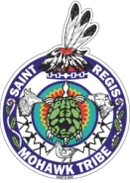-
Community & Family Services
- Care Management Program
- Child Support Enforcement Unit
- Family Support
- HCBS Waiver
- Home Improvement Supplement Program (HIP)
- Homeowner's Assistance Fund
- Individual Residential Alternatives (IRA)
- Individual Supports and Services (ISS) - Housing Subsidy Program
- Office of the Family Advocate
- Three Sisters Program
- Tribal Vocational Rehabilitation (TVR)
- Community Partnership Fund
- Economic Development
- Education
- Environment
- Executive Director's Office
- Finance
- Generations Park
- Grants & Contracts
-
Health Services
- A/CDP Outpatient
- A/CDP Prevention
- Partridge House (Inpatient)
- Ronthahiiohsthá:ke Clubhouse
- Business Office
- Centering Pregnancy
- Dental Clinic
- Health Promotion and Planning
- Laboratory
- Let's Get Healthy - Diabetes Center for Excellence
- Medical Clinic
- Mental Health - Kanikonri:ihne (Good Mind Counseling)
- Outreach Chronic Care Nursing
- Pharmacy
- School-Based Health Center
- Home Improvement Supplement Program (HIP)
- Human Resources
- Office for the Aging
- Office of Emergency Management and Safety
- Planning and Infrastructure
- Social Services Division
- Tribal Historic Preservation Office
- Tribal Police
While in operation, various industrial wastes were generated and disposed of on-site, namely, two disposal areas (the North Disposal Area and the East Disposal Area), an industrial landfill and four industrial lagoons. PCBs have been found in the groundwater, on- and off-property soil, and sediment in the St. Lawrence and Raquette Rivers, Turtle Cove and Turtle Creek. Groundwater was also found to be contaminated with volatile organic compounds and phenols have been detected in lagoon sludge, as well as in the disposal areas.
Over the past seven decades of discovery, remediation and restoration, several important milestones occurred.
From 1988 to 2005, GM completed a number of significant cleanups, including the dredging of the St. Lawrence River, Raquette River and Turtle Cove, groundwater collection at the base of the landfill and the development of a system to collect and treat water running off the site before discharge to the St. Lawrence River.
With the bankruptcy of GM in 2011, the Revitalizing Auto Communities Environmental Response (RACER) Trust was formed and assumed ownership of the site. Since that time, the pace of cleanup has quickened. RACER has successfully performed the demolition of the former on-site manufacturing buildings, as well as removal of the contaminated soil from underneath the buildings and the removal of soil in and around the industrial waste water treatment lagoons. In total, more than a half million tons of PCB-contaminated materials have been removed from the site since RACER Trust assumed ownership.
View a storymap presentation of the General Motors Central Foundry Superfund history - GM Cleanup a Reality

